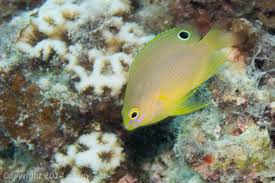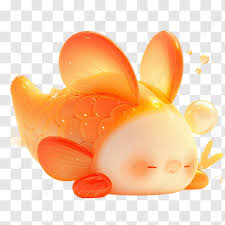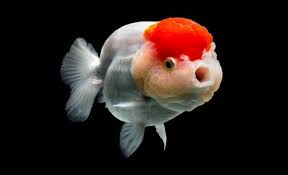Chinese fresh tea is celebrated worldwide for its rich aroma, delicate taste, and health benefits. However, improper storage can quickly degrade its flavor, fragrance, and nutritional value. To ensure that Chinese fresh tea maintains its original quality, it is essential to understand the best storage techniques, environmental factors, and preservation methods.
This article will explore the optimal ways to store Chinese fresh tea, ensuring that it retains its freshness and authentic taste over time.
1. Understanding the Factors That Affect Tea Preservation
Several external factors can influence the freshness, aroma, and flavor of Chinese fresh tea. The main elements that impact tea quality during storage include:
✔ Humidity – High moisture content can cause tea to absorb water, leading to mold growth and loss of freshness.
✔ Temperature – Storing tea in high temperatures can accelerate oxidation, altering its natural flavors.
✔ Light Exposure – Direct sunlight can break down essential compounds, reducing the tea’s fragrance.
✔ Oxygen – Prolonged exposure to air can cause oxidation, leading to a stale taste.
✔ Odor Absorption – Tea leaves are highly sensitive to surrounding smells, meaning they can absorb unwanted odors from their environment.
Understanding these factors is the first step in ensuring that Chinese fresh tea remains flavorful for as long as possible.
2. Choosing the Right Storage Container
The type of container used for storing tea plays a critical role in maintaining its freshness and aroma. Some of the best storage options include:
Airtight Metal Tins
✔ Why? Metal tins, especially stainless steel or aluminum, provide excellent protection against light, moisture, and odors.
✔ Best for: Green tea, oolong tea, white tea.
Ceramic Jars with Sealed Lids
✔ Why? Ceramic jars help maintain stable temperature and humidity levels while protecting the tea from sunlight.
✔ Best for: Pu-erh tea, dark teas, and aged teas.
Vacuum-Sealed Bags
✔ Why? Vacuum-sealing removes air exposure, slowing down oxidation and maintaining freshness.
✔ Best for: High-quality green tea, loose-leaf black tea, and premium white tea.
Glass Containers (Only for Short-Term Use)
✔ Why? While glass jars allow you to see the tea leaves, they do not protect against light exposure, which can degrade tea quality.
✔ Best for: Display purposes only, not for long-term storage.
3. The Ideal Storage Conditions for Chinese Fresh Tea
To extend the shelf life of Chinese fresh tea and preserve its delicate aroma, follow these storage guidelines:
A. Keep Tea in a Cool and Dry Place
- Ideal temperature: 10-25°C (50-77°F).
- Avoid storing tea near stoves, refrigerators, or areas with fluctuating temperatures.
- Humidity level should be below 50% to prevent moisture absorption.
B. Protect Tea from Direct Sunlight
- Store tea in dark cabinets, drawers, or opaque containers.
- Do not expose tea to artificial lights or UV rays for extended periods.
C. Avoid Storing Tea Near Strong Odors
- Tea easily absorbs nearby smells, so keep it away from spices, coffee, and strong-smelling foods.
- Use a separate storage area for tea to prevent contamination.
D. Minimize Air Exposure
- Always reseal packaging tightly after each use.
- For long-term storage, consider vacuum-sealed packaging to reduce oxidation.
4. Special Storage Techniques for Different Types of Chinese Fresh Tea
Different types of Chinese fresh tea require specific storage methods to maintain their unique qualities.
A. Green Tea (绿茶) – Store in a Cool and Dry Place
✔ Shelf life: 6-12 months.
✔ Best storage method: Refrigeration (below 5°C or 41°F) in an airtight container.
✔ Avoid: Exposure to air and strong odors.
B. White Tea (白茶) – Benefits from Aging
✔ Shelf life: 1-5 years (improves with age).
✔ Best storage method: A cool, dark place in a breathable container like ceramic jars.
✔ Avoid: Plastic bags, as they can trap unwanted moisture.
C. Oolong Tea (乌龙茶) – Keep Away from Light and Heat
✔ Shelf life: 6 months to 2 years.
✔ Best storage method: Airtight metal tins stored in a dark, cool area.
✔ Avoid: Excess humidity and air exposure.
D. Black Tea (红茶) – Store at Room Temperature
✔ Shelf life: 1-2 years.
✔ Best storage method: Sealed in a tin or vacuum-sealed bag at room temperature.
✔ Avoid: Storing in a refrigerator, as condensation can ruin the leaves.
E. Pu-erh Tea (普洱茶) – Requires Aging
✔ Shelf life: Improves over decades.
✔ Best storage method: Porous clay or bamboo containers in a slightly humid environment (60-70% humidity).
✔ Avoid: Sealing Pu-erh tea too tightly, as it needs airflow to develop its rich flavor.
5. How to Extend the Shelf Life of Fresh Tea
To keep Chinese fresh tea at peak quality for longer, follow these expert tips:
✔ Buy smaller quantities – Only purchase what you can consume within a few months to enjoy maximum freshness.
✔ Divide tea into smaller portions – Instead of opening a large package frequently, store tea in multiple small containers.
✔ Use silica gel or desiccant packs – These help absorb excess moisture, preventing tea from becoming damp.
✔ Re-seal packaging immediately – Limit air exposure by sealing tea tightly after every use.
✔ Keep track of the purchase date – Label your tea containers with the date of purchase to ensure you consume the oldest tea first.
6. Common Mistakes to Avoid When Storing Tea
🚫 Mistake 1: Storing Tea in the Refrigerator Incorrectly
While some green teas benefit from refrigeration, improper storage can lead to moisture absorption. Always store refrigerated tea in an airtight, moisture-proof bag.
🚫 Mistake 2: Using Transparent Containers
Glass jars may look elegant, but they expose tea to light, which degrades its freshness. Always opt for opaque storage options.
🚫 Mistake 3: Storing Different Teas Together
Each tea has a distinct aroma, and mixing different teas in one container can lead to flavor contamination.
🚫 Mistake 4: Leaving Tea Near Strong Odors
Tea absorbs surrounding scents easily, so avoid placing it near spices, coffee, or perfumes.
🚫 Mistake 5: Storing Tea in the Wrong Climate
Excessively humid or hot environments will cause tea leaves to deteriorate quickly. Choose a cool, dry place with minimal temperature fluctuations.
Conclusion
Proper storage techniques play a crucial role in maintaining the aroma, taste, and health benefits of Chinese fresh tea. By controlling humidity, temperature, and air exposure, you can preserve your tea’s freshness for an extended period.
To ensure optimal flavor, store your tea in airtight containers, away from light and strong odors. Follow the specific storage recommendations for different types of Chinese fresh tea to experience their authentic flavors for longer.
By implementing these best practices, tea lovers can enjoy the delicate and refreshing taste of Chinese fresh tea at its finest!










